Local Search Is Evolving, Here's Why You Need to Pay Attention
Twin Pack, 3-Pack, 5-Pack, InfiniPack, Quad Pack; local results are expanding. And it could be more impactful than AI Overviews at driving Zero-click behaviors.

When SEOs talk about the future of search they usually talk AI Overviews (AIOs). While AIOs are interesting they have yet to really surface in local (post-Google I/O). And it is not clear that they will. The heated Google-AI conversation might in fact be masking another, equally significant but overlooked move by Google to control search results with their data: local entity expansion.
When we think of Local Search and Google, the Local 3-Pack comes to mind. Even though Google has embraced the Local Pack as a staple of local search results, the reality is much more varied and nuanced. When we look closely we see the Google local listing graph claiming ever more space in both ads and organic search results.
Why is this important? And what can we learn about the future of local by better understanding what we are seeing today?
Typical Local Result Today
That's a trick heading because the reality is that there is no typical local result. Google varies the results based on the vertical and user intent. The standard results fall into 5 or so types: retail & restaurants, professional & home services, hotels, product packs and brand packs:
| Sales & Restaurants | Pro & Home Services | Hotels |
|---|---|---|
 |
 |
 |
| Products | Brands | |
 |
 |
Obviously the Product Packs also leverage Google's product graph and local graph, as do many ad types these days and while they certainly are playing an ever bigger role in local search results, product inclusion is a discussion for another day.
Expansion of Local listings Visibility
Over the past three-to-four years, elements of the Google's local listing graph have migrated to ads as well as organic results further down the page. Local Services Ads (LSAs) and Sponsored Ads using Location Assets are two clear examples of Google using local elements in ads. These ads, because of limited disclosures, positioning, layout and social proofs (ratings), are often not clearly perceived as ads by searchers but as part of organic local results.
| Location Assets | Location Assets (Pack) | Local Service Ads |
|---|---|---|
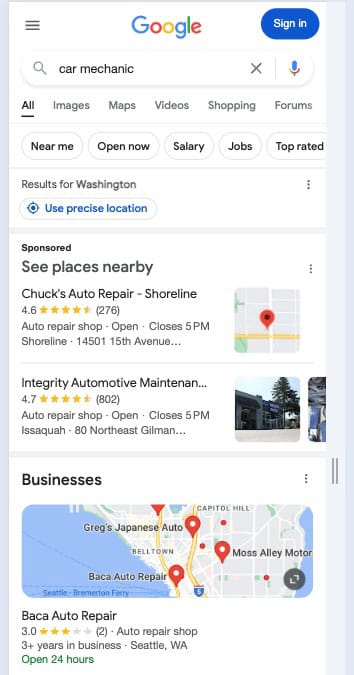 |
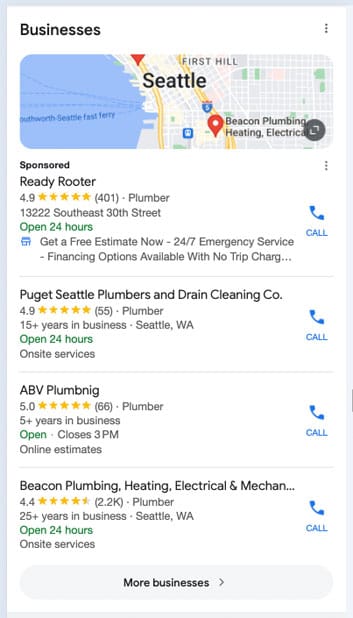 |
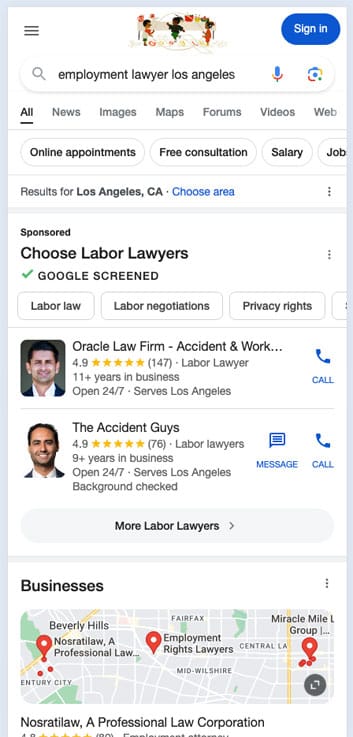 |
Of more interest, to me at least, is the presence of an increasing number of local graph elements in organic results. Elements like the Search/Find or Order by photos are shown across multiple verticals.
| Find by photos | Order | |
|---|---|---|
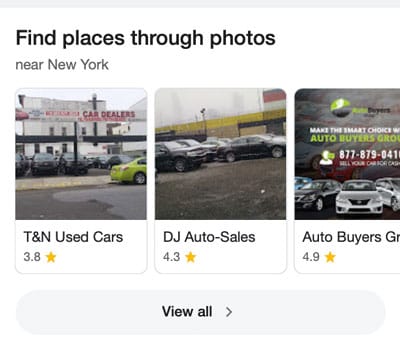 |
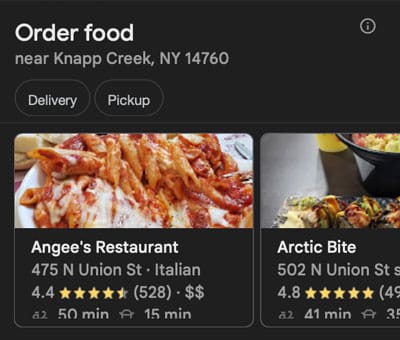 |
The resurrected Plus Box is another local graph element often shown concurrently with other local expansions. It appends local mapping data to organic results for businesses that engage with Merchant Center via product uploads.
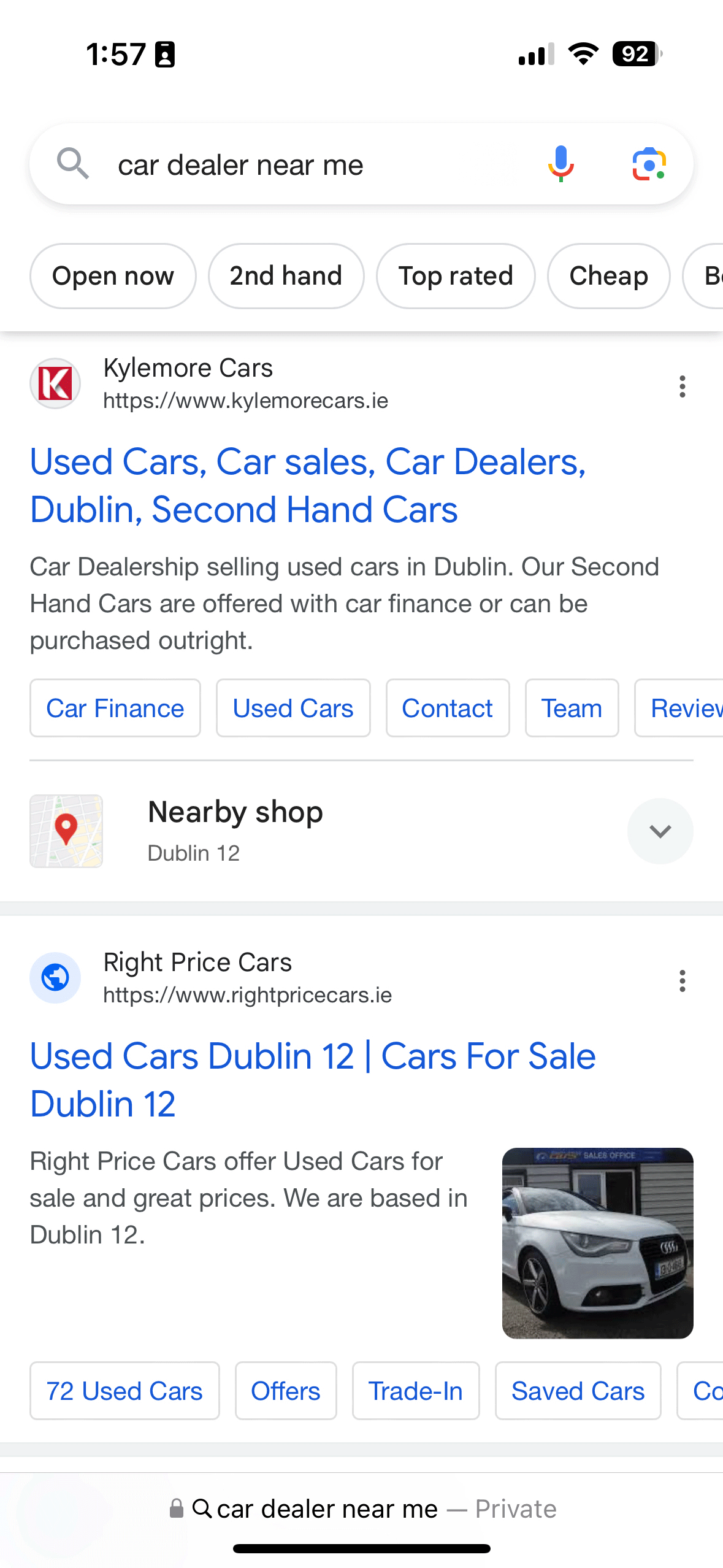
Testing Infinite Expansion of Local Visibility
Google search experiments are common and a way for Google to measure the general value and relative utilization of new universal result layouts. And recently, we have been seeing a lot of tests that either expand the Local Pack or add additional, more visual iterations of local listings. These include the 5-Pack and what I'm calling the Quad Pack.
| Quard Pack (Below TA) | 5 Pack |
|---|---|
 |
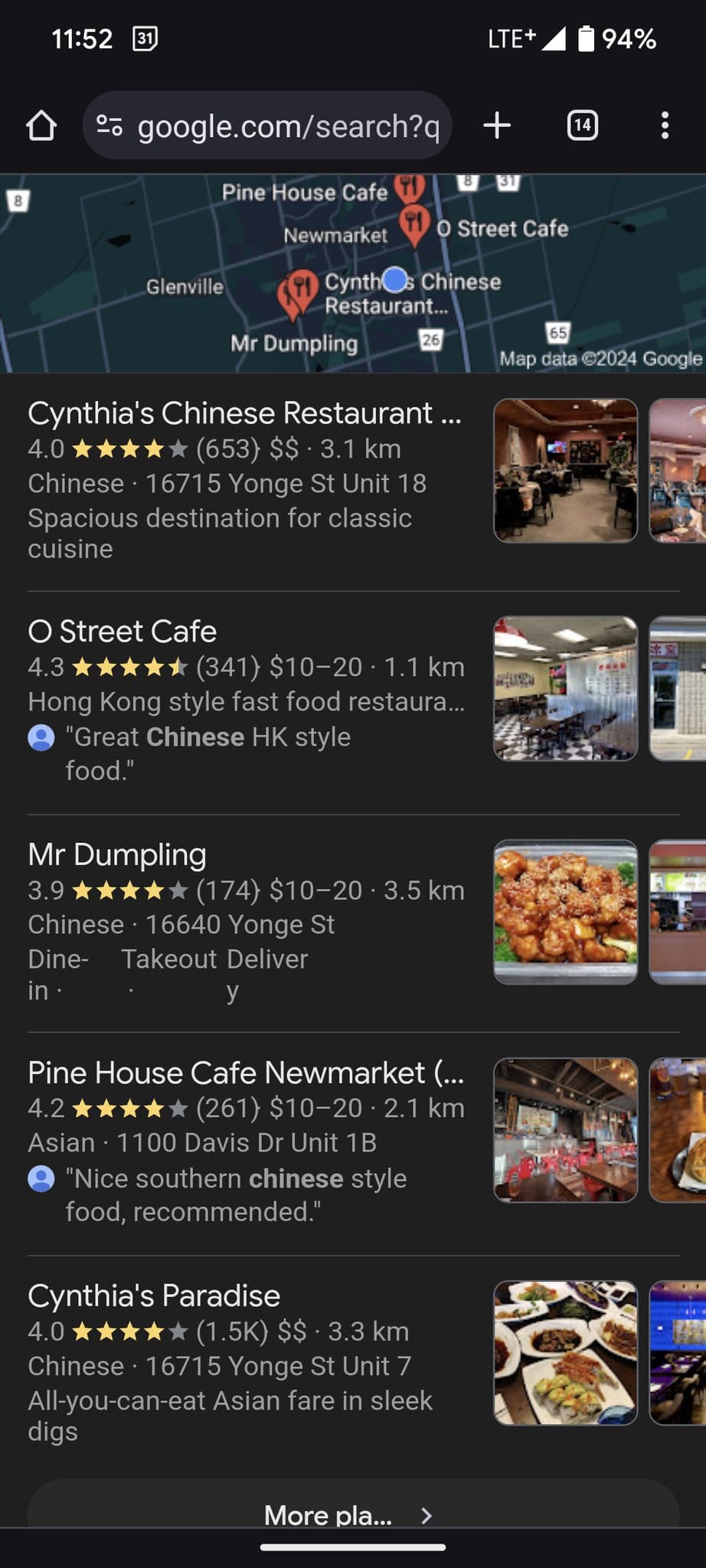 |
An even more surprising test expansion we have seen is the "InfiniPack" – a virtually endless display of local entities for near me searches.
All of these tests reflect the expanding visibility of local entities. What the InfiniPack (video below) demonstrates is an almost endless number of local businesses displayed as individual results, not really tied to the hard limits imposed by a 3 (or even 5) Pack result. It eliminates the need for the user to head over to the Local Finder or even to Maps, and theoretically provides the answer directly in search.
EU: Where the Expansion Is Happening
You don't need Google experiments to see where local search results are going.
In the EU, Google released Digital Markets Act (DMA) compliance features like Places sites and chose to stop sending local results to Google Maps in an effort to demonstrate their attempts at DMA compliance.
In the same timeframe, they also doubled down with a dramatic expansion of local results. The Twin Pack, a second Local 3-Pack displaying one or two positions below the main Local Pack started showing up. A Google engineer, at the recent DMA hearings in Brussels, told me that the feature was a bug. Yet it has been present for a six months, which belies that response.
Perhaps Google was trying to make a point with their removal of a Maps link but the Twin Pack has much the same effect as having the ability to capture users with Maps. The Twin Pack is part of a long trend to include ever more data from their local graph in the search results and to keep users on Google.
When you scroll through these results you'll notice that organic search results have almost been subsumed by LSAs and sponsored ads, local features and People Also Search For results. Most organic results present, such as Places Sites, offer a scrolling carousel but only occupy a single slot.
| Sneakers near me | Plumbers near me | |
|---|---|---|
 |
 |
 |
How Does This Affect Your Marketing?
Web traffic, while nice, is not critical to our success in Local. All these tests and the rollouts in the EU make Google's local entity results more important than ever and suggests that businesses need to double down on entity enhancing activities like photos, reviews and particularly products.
Websites in many verticals will retain their importance, as much as Google wants to minimize their visibility, because consumers still need more information than Google is often able to provide. However, they must quickly answer users' unanswered questions. Hours, phone number, address, and contact options are obvious. But, depending on the vertical, things like what insurance do you take?, are appointments available? (etc.) become important to quickly answer on the site.
Most importantly, all local businesses need to move away from SEO tactics that attempt to directly influence Google search results. Shift effort into local brand building. Think about relationships with local non-profits, articles (not even links) in the local news and validation by local business groups. This may look like local linkbuilding – getting links or mentions on sites with local authority – but it's more strategic with a larger goal: developing your brand in the real world.
Why Is This Important?
Google's long term goal has been to control more of search results surfaces to maximize user search volume and ad exposures. This behavior has been obvious to many for a good long time in the form of zero click searchers (see our recent Rand Fishkin interview) and "Google as your new home page" thinking.
The conversations around AIO's potential impact on site traffic has focused on publishers and websites that offer answers to informational queries. However AIOs are not the only way for Google to maximize search results "shelf space" in an effort to capture eyeballs for longer.
At the EU EMA hearings in Brussels, referenced above, Google was quite clear that they would not be talking about Local Search results or their entity graph in the context of "self-preferencing." By attempting to set up this boundary, they're trying to protect one of their important sources of proprietary data that encourages zero-click behaviors: the local graph.
It should be obvious from the above examples that the trend in Local is much like the trend every place else on Google. It's not so much about AIOs for Google as it is about creating surfaces that reduce the amount of traffic going off-site and maximizing their opportunities in the SERPs.
